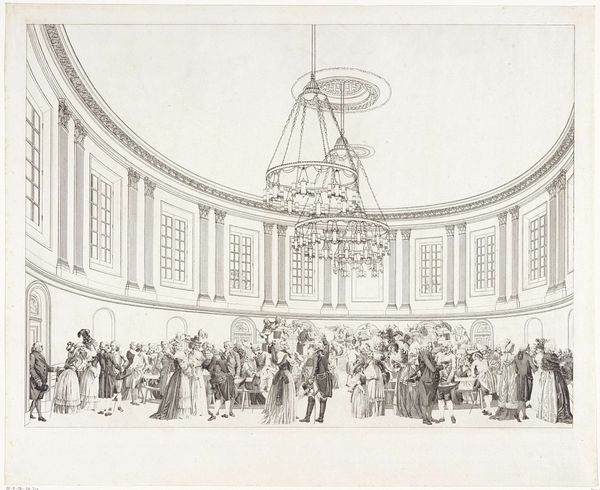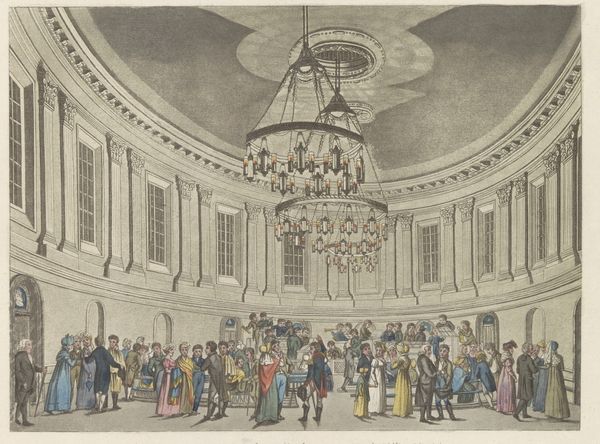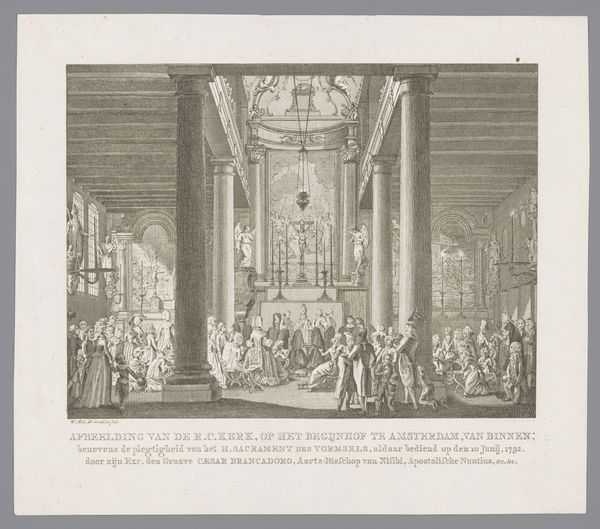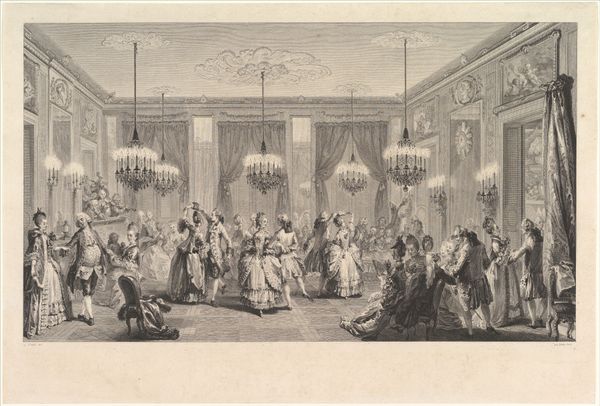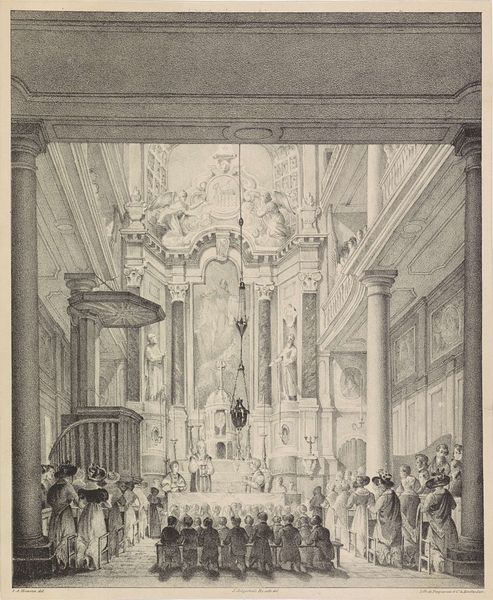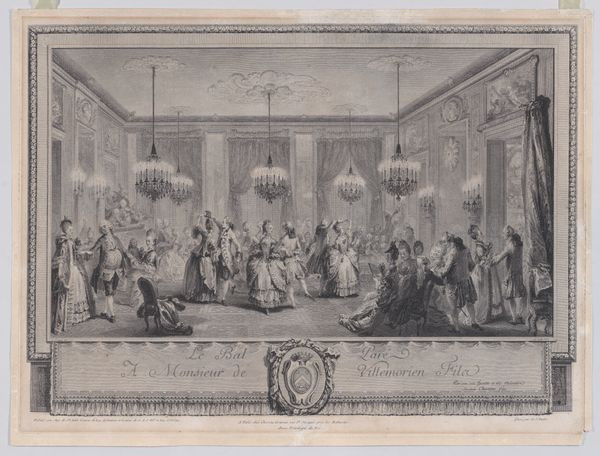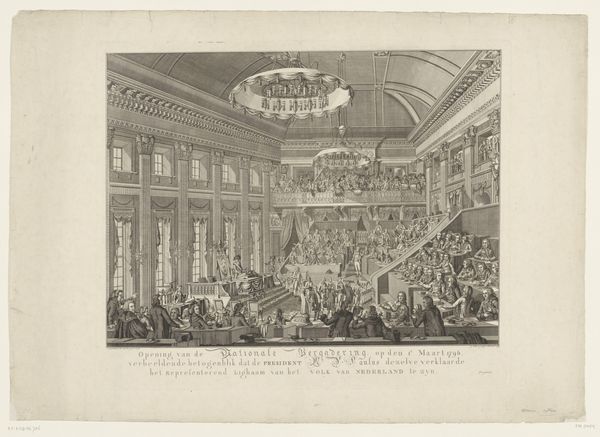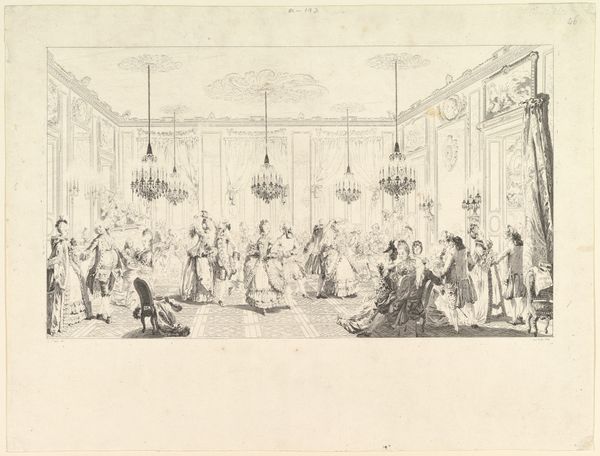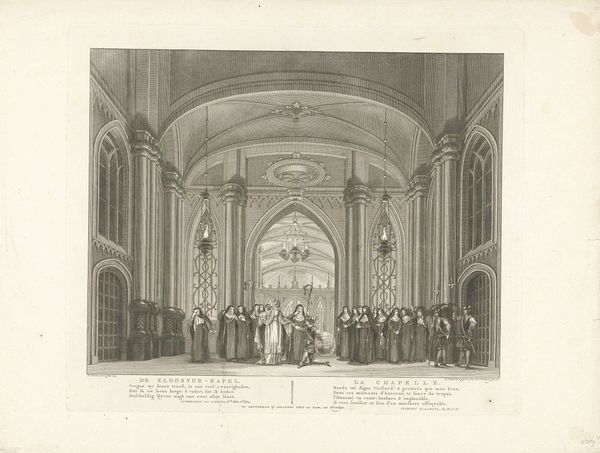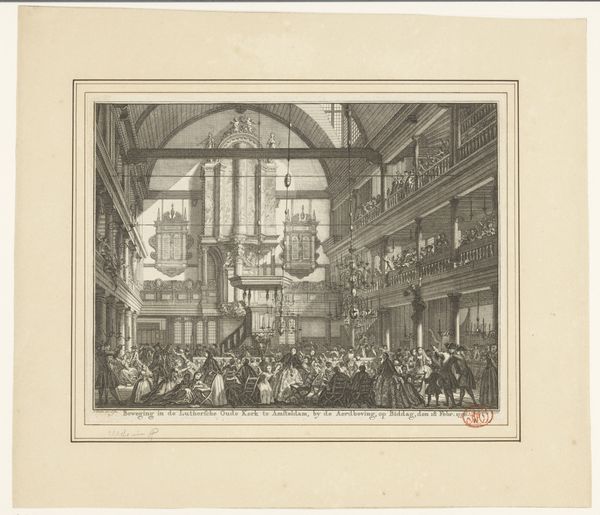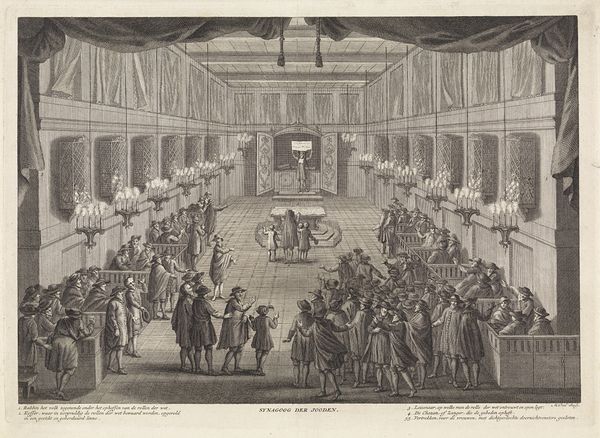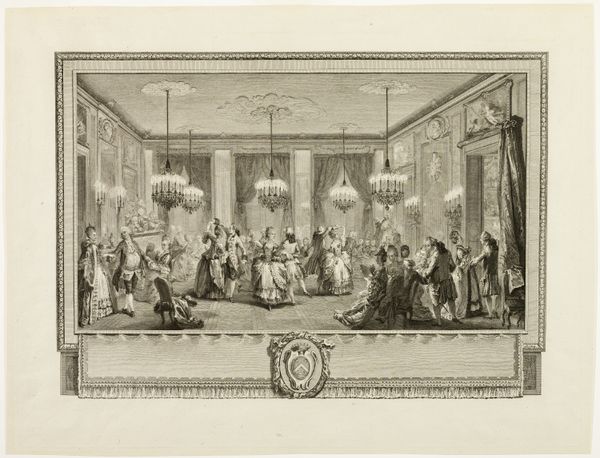
print, engraving
#
neoclacissism
# print
#
line
#
cityscape
#
genre-painting
#
engraving
Dimensions: height 429 mm, width 550 mm
Copyright: Rijks Museum: Open Domain
Curator: This print by Noach van der (I) Meer, titled "Concertzaal in Felix Meritis, 1791," offers us a glimpse into a Neoclassical concert hall. It is currently housed in the Rijksmuseum. What's your first take on it? Editor: It’s incredibly detailed! I’m immediately struck by how this print seems to capture a specific atmosphere. The soft light suggests a hushed anticipation among the crowd. What draws you in, considering the production aspects? Curator: I’m intrigued by the engraving and line work employed to achieve this level of detail, it invites discussion around the social role of printmaking in disseminating images of cultural spaces like this. Think about the labor involved, the skill necessary, and how the accessibility of prints might have democratized the experience of attending a concert hall, even for those who couldn't physically be there. Editor: Absolutely. The subject matter offers an interesting lens on class and gender within the performance arts. This was a space likely only accessible to the elite. Note the composition, how the artist depicts the women. Are they merely decorative, or can we discern a level of agency in their interactions? What statements are we to make based on dress and posture? Curator: Good point, the fashion details visible – the fabrics, cuts, embellishments, point to production economies, networks of trade, and perhaps exploitation of resources and labour involved in textile manufacturing. We can consider how these concert halls may reflect broader systems of power in their designs. Editor: It highlights how cultural spaces weren’t neutral; they were deliberately curated environments shaped by—and, in turn, shaped—social identities and hierarchies. To see these elements meticulously recreated through print, for wider audiences, prompts critical thinking about consumption and class, don't you think? Curator: Exactly! The print transforms a physical gathering into a commodity, circulating an ideal of culture, while quietly embedding the realities of its material origins. I believe that unpacking this further enables us to gain insight into 18th century society and material values. Editor: Yes, reflecting on the historical conditions of its production alongside its visual narratives expands our understanding of cultural and social history as well.
Comments
No comments
Be the first to comment and join the conversation on the ultimate creative platform.
